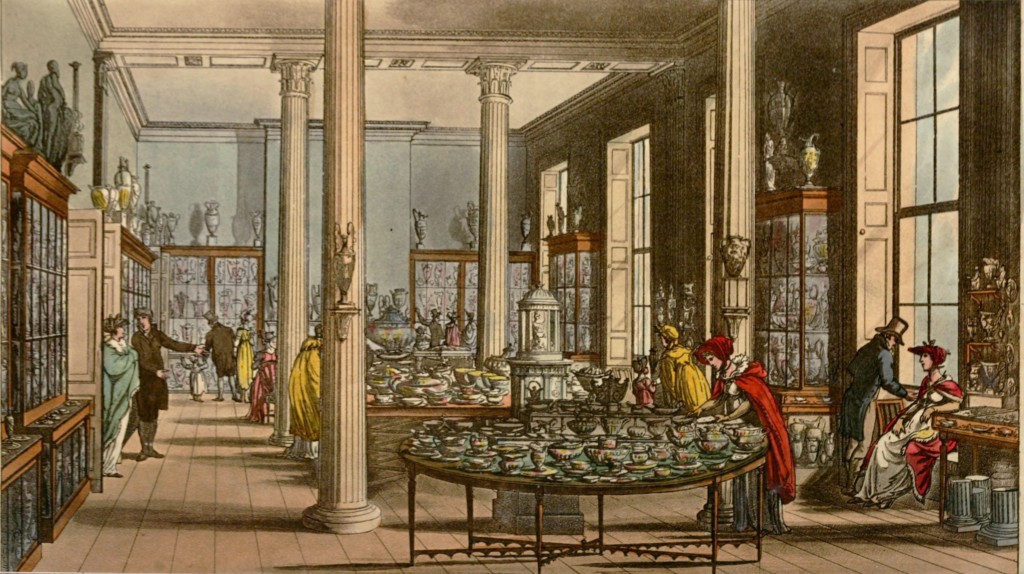Streets of London – St. James Square circa 1812

St. James Square, London circa 1812
from The Repository of arts, literature, commerce, manufactures, fashions and politics
“This square, situated on the north side of Pall-Mall, is extensive and beautiful. The greater part of its area is paved, the center only being surrounded by iron railing, which forms an octagon; in the middle is a circular basin of water, in which, on a pedestal, is an equestrian statue of William III in stone, erected in 1808, with the amount of a legacy bequeathed by a gentleman for the purpose.”
“It must be obvious to the greatest stranger, that the inhabitants of a square like St. James’s must be of the first rank and consequence. On the cast side, at the entrance from Pall-Mall, is the spacious mansion of the Duke of Norfolk, in which a recent writer states (we know not on what authority), that his present Majesty was born. Adjoining to this is London House, the town residence of the bishops of that sec. Here are also the mansions of the Earls of Dartmouth and Falmouth, Lord Viscount Castlereagh, Sir Watkin Williams-Wynn, George Byng, Esq. M. P. for Middlesex, Alexander Davison, Esq. &c.”
“At the south-west corner, opposite to Norfolk House, is the stately edifice erected (we believe) by the late Duke of Leeds, but which, since the removal of the Ordnance Office to Cumberland House in Pall-Mall, has belonged to the Union Club. On the north side, at the east corner of York-street, is the house and factory established by the late Josiah Wedgwood, Esq.* who invented and brought to perfection a species of porcelain in imitation of the Etruscan and other potteries of antiquity, as well as of the best models of the moderns. This house was formerly the residence of a Spanish ambassador to our court, and the adjoining chapel in York-street was a place of worship for himself and his retinue. This chapel has since been used for the religious exercises of various congregations, and at present belongs to Mr. Proud, a follower of the principles of Emanuel Swedenborg.” The Repository of arts, literature, commerce, manufactures, fashions and politics, 1812.
“The subject of this plate is a representation of the principal room of a suite forming the magazine which belonged to the late Mr. Josiah Wedgwood, and is now the property of his successor in the manufactory. This establishment has existed nearly 50 years; and, during that long period, the public attention has been kept alive by the extraordinary discoveries and improvements, both in art and taste, which the fertile genius of its proprietor was constantly introducing.” The Repository of arts, literature, commerce, manufactures, fashions and politics, 1809.

